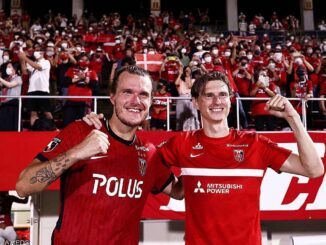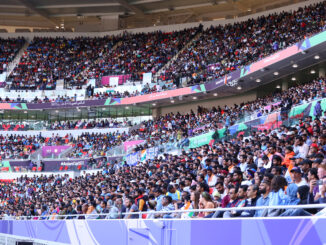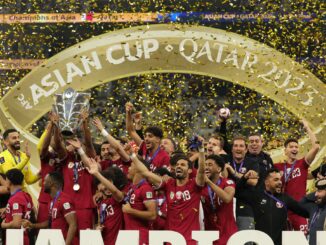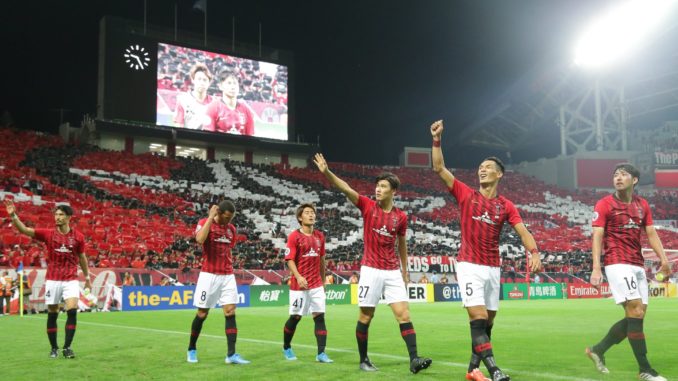
If you only watch Urawa play in continental competition you could be forgiven for thinking that they’re amongst the best Asian club teams going round – confident, with control and occasional verve in attack and a well organized and commanding edge to their defensive work.
If you only watch them domestically you could be forgiven in thinking how they might get on in the second division next year – a mess organisationally, frequently ripped apart in transition and – outside of Shinzo Koroki – with barely a goal threat in sight.
In all my years of following Asian football I can’t recall a bigger disparity between not only results but also the way that a team plays between their domestic league and the ACL.
Indeed in the 12 AFC Champions League matches they’ve played they’ve earned almost as many wins as they have in virtually an entire season of J. League action – half a dozen on the continent and just nine back at home.
It’s hard to get a grasp on just who the real Reds are – the woeful side that’s just five points clear of relegation in the league or the impressive one that’s rolled Ulsan, Shanghai SIPG and Guangzhou Evergrande on their way to the ACL final?
Much of the split personality involving the club can perhaps be traced right back to pre-season this year where they opted for a highly unusual preparation.
With serial title winner Oswaldo Oliveira at the helm Reds chose not to play a single competitive pre-season clash with the mantra from the coach being that as they will play upwards of 60 matches in 2019 they needed to ease their way into the year.
That assumed lengthy runs in both domestic cups as well as extended ACL success alongside their regular league duties.
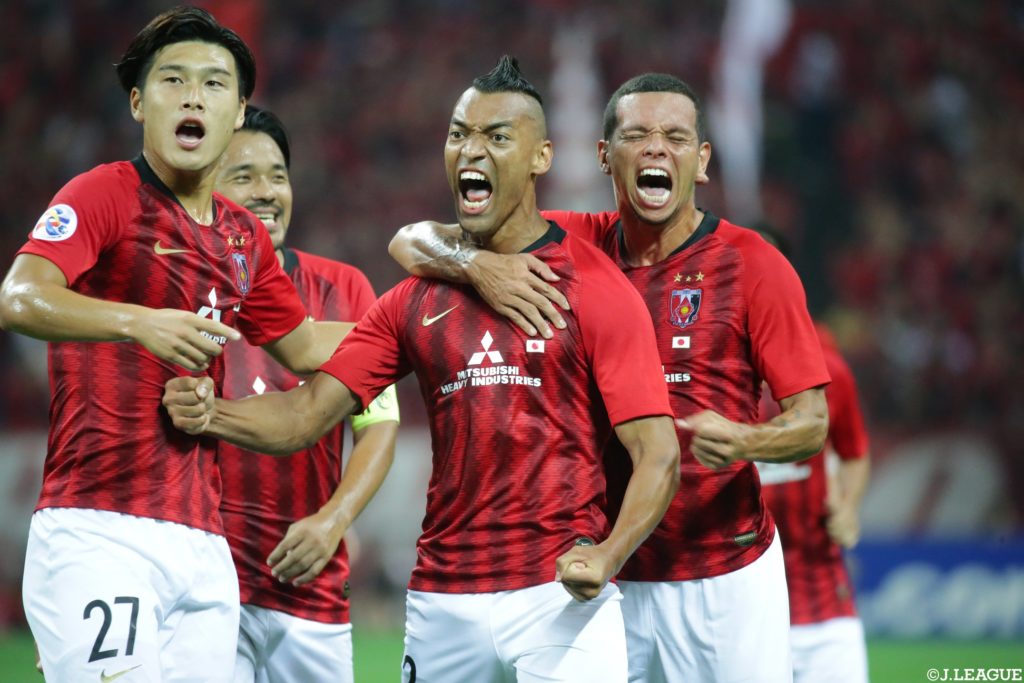
Whilst the ACL has obviously been the shining light, their participation in both domestic cups ended early with elimination from the Levain Cup at the first time of asking, after a bye into the second round, before they were rolled in the Round of 16 in the Emperor’s Cup by an amateur side.
The real worry on that limited preparation was the sluggish way that they started the calendar year: a loss in the season-opening Super Cup was followed by just the one win in their first three league matches.
After a decent run in April, they lost all four J. League matches in May against teams that are mostly struggling near the bottom of the standings and that was enough for management to terminate the Brazilian’s contract and install the rather gruff and slick haired Tsuyoshi Otsuki for his second stint at the helm.
Since that time he’s won – wait for it – just four times in 19 league matches and that’s clearly nobody’s idea of a good time.
As an aside this is another obvious flaw in the AFC’s annual prize giving fiesta where, win or lose the ACL final, the odds are as short as you’ll find that Otsuki will be the man collecting the gong for Coach of the Year.
At least this comedy is consistent after Takafumi Hori won just five of his 19 matches in charge at Urawa in 2017, including winning just three of the six matches he took charge of in the ACL yet was still – to the bemusement of the continent – named Coach of the Year.
To complete the club’s miserable time of things in the league, Otsuki was involved in a bizarre incident in the J. League last week where a Kashima player strayed into his technical area during the pair’s clash in Ibaraki and was then promptly shoved in the chest by the coach and sent tumbling to the ground.
That led to a touchline ban and a hefty club-imposed fine, and was surely a symptom of the underlying issues that are bubbling away at Reds, with the talk being that they’ve already held discussions with other coaches as they prepare to move on from Otsuki next season.
Against that backdrop their run of success in the ACL has been nothing short of exceptional if not completely unexpected and out of character.
Both the coach himself and the players have struggled to find a considered reason for their vastly different form in the two competitions but have often mentioned that it’s both a tactically and mentally different challenge in playing on the continent and that’s about as sound an explanation as you’ll hear.
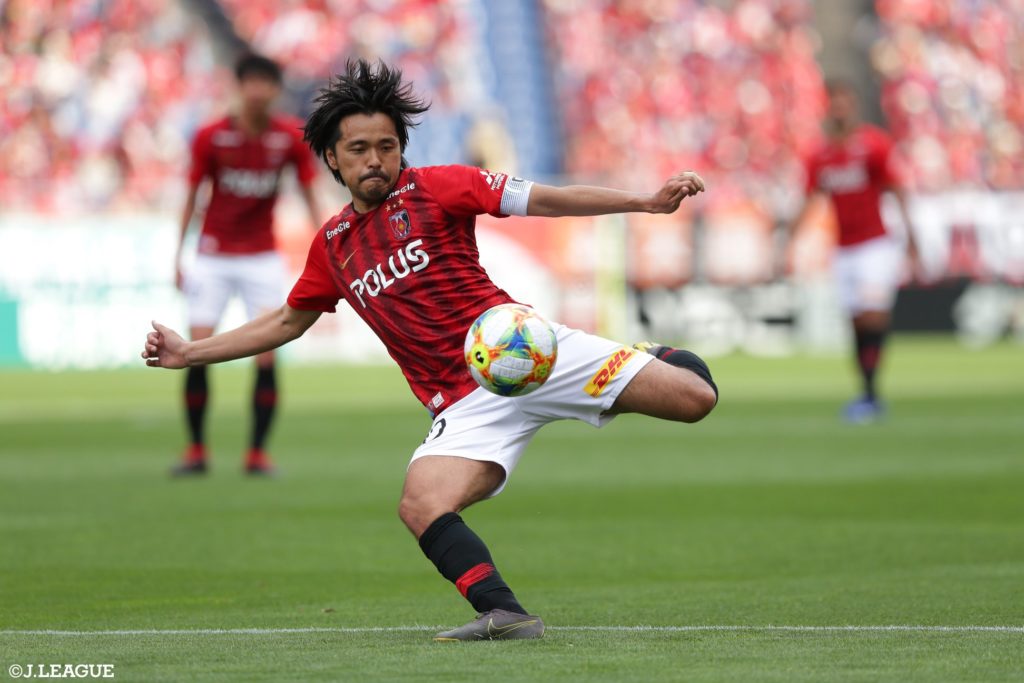
With many of the J. League teams relegated to the second division bouncing straight back up again there’s a slight air of predictability around much of the league and its recycled coaches – not to mention the atmosphere at most grounds in the nation being very familiar from one to the next, whereas in Asia everything is new again.
Different weather, different conditions in and around matchdays to contend with, different styles of play and new tactical challenges for the coaching and playing staff to overcome.
Full credit to Urawa for having navigated those waters so impressively and it wouldn’t surprise at all to see them go on and complete the job in the two-legged final that starts this weekend.
The loss of goalkeeper Shusaku Nishikawa for the first leg is a blow but after having rotated virtually their entire regular XI for the midweek league loss at home to Kawasaki Frontale on Tuesday they’ll be freshly rested for that first leg.
They even took the unusual step of rotating Nishikawa from the previous league encounter to give the backup keeper, Haruki Fukushima, a chance to play with some of the XI that he will be together with in the cauldron in Riyadh on the weekend.
Both on paper and in the evidence provided on the pitch, this isn’t a star-studded side bristling with talent and ready to complete their domination of the tournament, but it’s a functional and highly experienced one that may just be good enough.
Tomoaki Makino has been a solid presence defensively and whilst Takuya Iwanami is a dependable foil the club has struggled to find a consistent third central defender in the 3-4-2-1 that they almost always play, with both Daisuke Suzuki and Mauricio taking turns in that role.
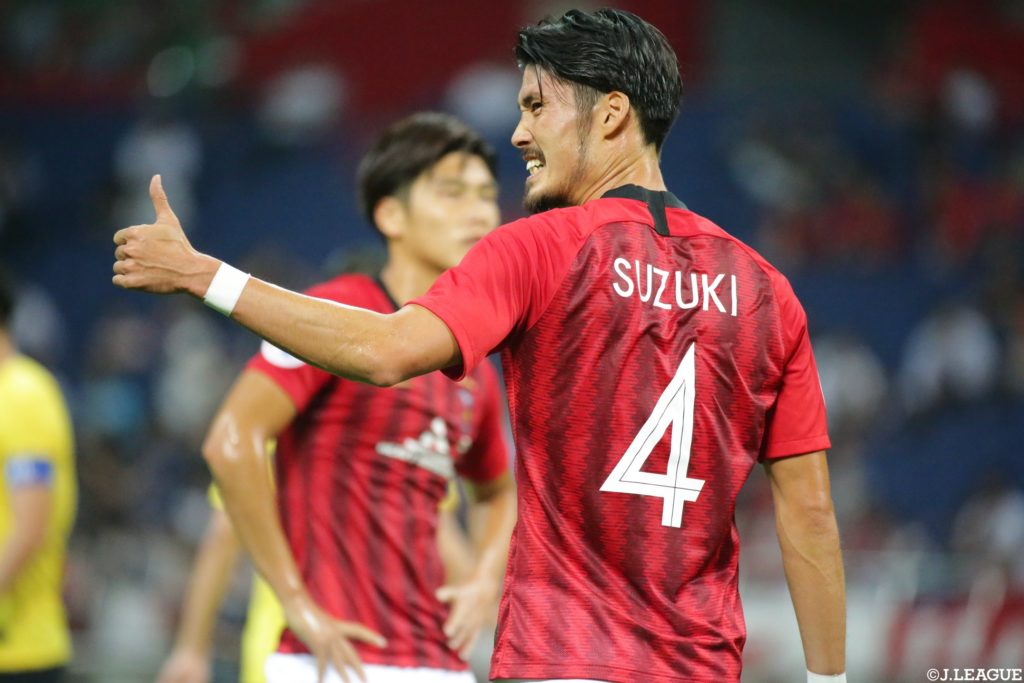
Takuya Aoki has just returned from injury and may not be fit enough to start in the first leg which could see veteran Yuki Abe start alongside the functional Ewerton in the central roles with the impressive Daiki Hashioka (arguably their second most important player) and Takahiro Sekine in the wide midfield/wingback roles.
Yuki Muto is still injured which means that Fabricio and Kazuki Nagasawa will line up as the two number tens and try to provide service for the undisputable star of the campaign in the veteran Koroki, whose entire career has been a lesson in maximizing the talents that you’re born with.
Blessed with neither pace nor size the now 33-year-old is one of the smartest Japanese players of his generation in and around the box with the vision to make fine runs off the ball, fantastic positioning in advanced areas and a deadly eye for goal – if he fires so too do Reds, if not the club almost always struggles.
It’s now over to Al Hilal to try and find a way to contain him and if they can that will go a long way to deciding the contest.
As always with Reds there’s the sense that there might not be many goals in the two-legged final and it could well be one or two decisive moments that decide the tie – in Koroki they have just the big-game kind of player needed to settle things.
Whether they win or not it’s hard to mount an argument that they’re Asia’s ‘best’ team, heck they’re not even in the top dozen teams in their own league, but there’s every chance come late evening on November 24 that they could have their name carved on the ACL trophy for the second time in three years and that’s a fantastic achievement whichever way you look at – and the club’s fans hope they won’t be toasting that success at grounds across Japan in the second division next year.
Photos: J. League


